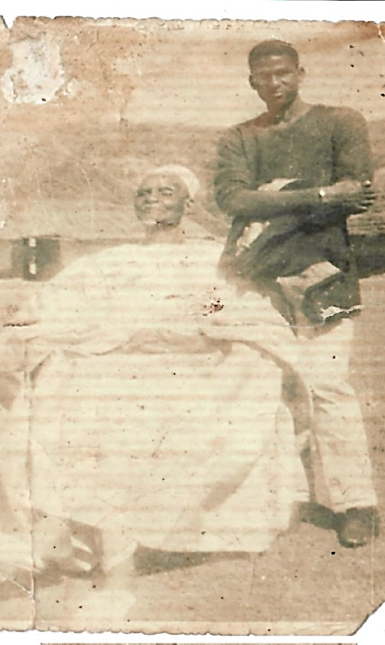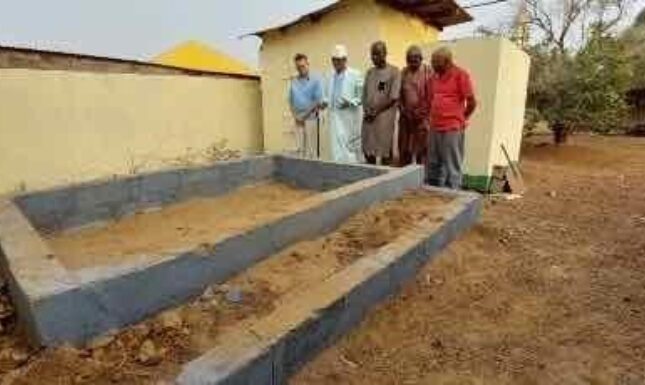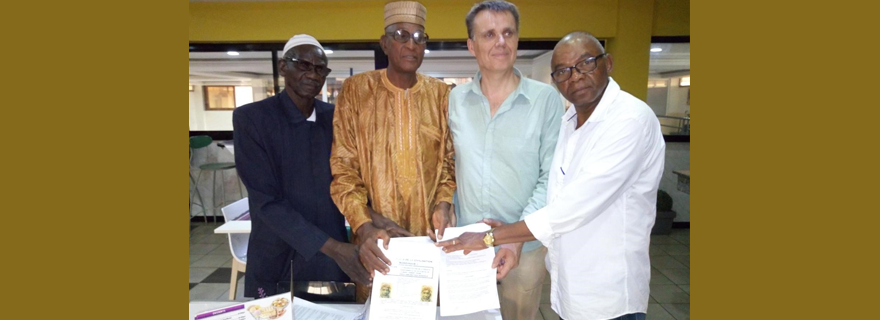The longest Ethnography
In 1962 Djiguiba Camara asked his son Daouda to finish his manuscript of the region' history. Daouda dedicated his life to complete this politically highly sensitive manuscript, which included a forced exile from Guinée to Côte d’Ivoire. In this blog, Jan Jansen tells the story behind its creation and its publication.
From hostage of the French colonial system to historian
This story starts in 1894. That year a general of Samory Touré’s army defected to the French. In the last decades of the 19th century, the French colonised the interior of West Africa. Samory Touré was their main opponent. To guarantee the loyalty of this defected general, the French “selected” one of his sons, a twelve-year-old boy called Djiguiba Camara, to be educated in the French colonial administration. He was sent to the so-called “School of Hostages” in Kayes, present-day Mali.
Djiguiba was a talented person who was installed a few decades later as “chef de canton” and he settled in his native village of Damaro. In 1929, he started to write a history of his region. He modestly titled it “Essai d’Histoire Locale”. In 1955, this work had evolved into a typoscript of 110 pages: Essai d’histoire locale by Djiguiba Camara.
When the French literary scholar Élara Bertho found this typoscript in an archive, about a decade ago, she associated with Marie Rodet and they asked Djguiba’s family for permission to publish it, in the series African Sources for African History, which I co-edit for Brill Publishers. On that occasion the story made a sensational turn.


A life dedicated to a promise
Djiguiba’s inheritors explained that he had continued working on his manuscript; the 1955 typoscript was just a preliminary version. And on October 2, 1962, Djiguiba had asked his son Daouda “to finish the work”. Daouda promised to do so, left Damaro to return to Conakry for his studies, and would never see his father again; he passed away a few months later.
In those days Guinée was a socialist one-party state with an increasingly paranoid and cruel president, Sékou Touré. This dictator did neither allow individual authorship (and personal creativity), nor the critical historical study of Samory Touré, to whom he was related from his maternal side. Daouda was doing both.
Rumors about the existence of the manuscript reached Sékou Touré in 1972, but Daouda was informed about this in time and could flee the country, thus saving himself and his family from a guaranteed execution.
Daouda fled to Côte d’Ivoire, via Liberia, in a car owned by his uncle, with the manuscript smuggled in a trunk with a false bottom. This trip was extremely dangerous, with numerous checkpoints and roadblocks, including suspicious soldiers and drunken commanders (see note 25 in Aspects de la civilisation Mandingue by Universiteit Leiden).
Daouda lived for more than twenty years in exile, during which he continued to work on the manuscript. After his return to Guinée, in the mid-1990s, he digitised everything and kept on adding material. His (very large) family and spouse patiently waited for the day he would declare it “finished”.
From 110 to 2,500 pages
When Élara Bertho and Marie Rodet met Daouda in 2016, the manuscript consisted of more than 2,500 pages, printed in two gigantic volumes. The family wanted to publish this text instead of the 1955 typoscript. That is the moment when I proposed the following to the family: Élara and Marie would receive permission to publish the typoscript and I promised them to publish Daouda’s text. They accepted. Thus, I went to Conakry, in 2018, quickly assessed the enormous historical and ethnographical value of the document, and a contract was signed in which the family defined my tasks. Most important to me was that all parties enthusiastically agreed to an online publication. The author would be Djiguiba Camara! No Daouda, no Jan, but the person who started the project!
It was much work to edit the text, as Daouda has no training in writing, but also a privilege to work with him and his family. Last January, I accompanied Daouda to Damaro (with CADS colleague Sabine Luning as a special guest) to present Volume 1. The short documentary that was broadcast on Guinée’s national television illustrates the joy and happiness (and maybe relief) that, at the age of 83, Daouda finished his promise successfully.





0 Comments
Add a comment